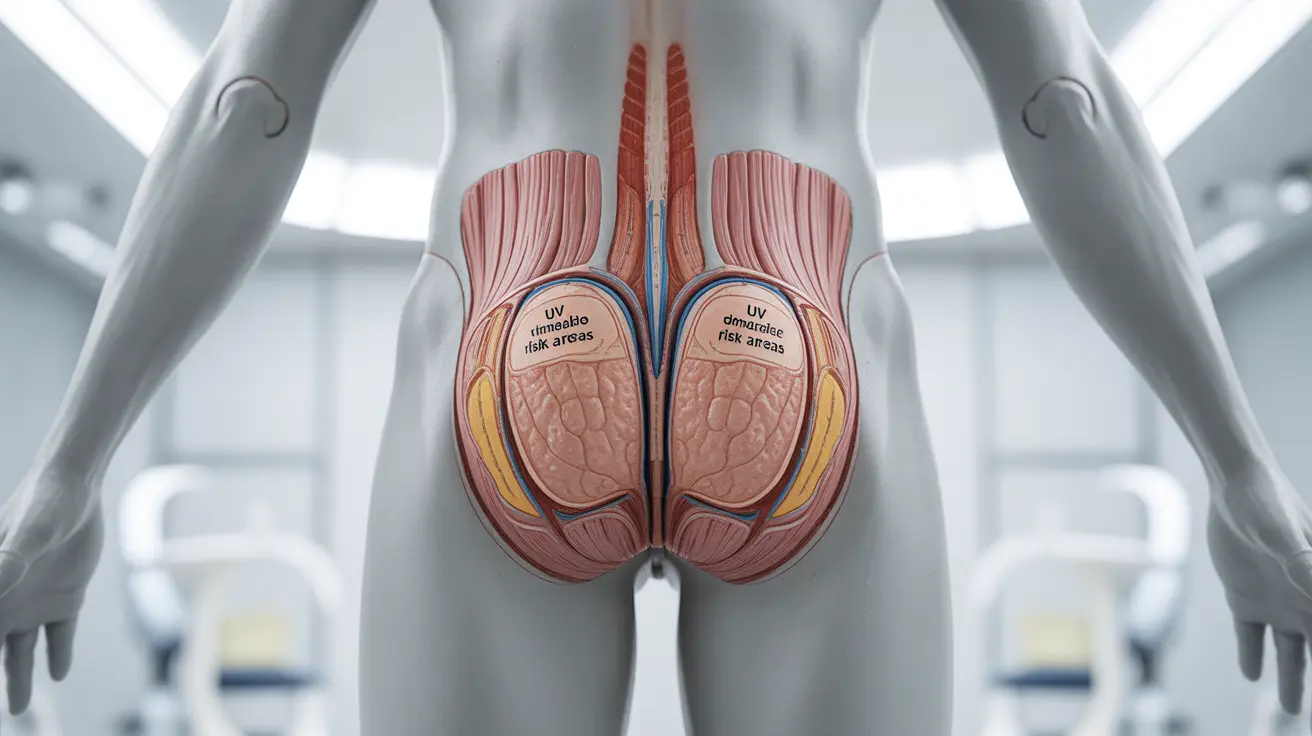The practice of perineum sunning, also known as "butthole sunbathing" or "perineal sunning," has gained attention on social media platforms as a supposed wellness trend. This controversial practice involves exposing the perineum—the area between the anus and genitals—to direct sunlight. As medical professionals, it's crucial to address the potential risks and separate fact from fiction regarding this unconventional practice.
While proponents claim various health benefits, it's essential to understand the medical implications and potential dangers before considering this activity. This article will examine the scientific evidence, associated risks, and safer alternatives for achieving optimal health.
Understanding the Risks of Perineum Sunning
Exposing sensitive areas of the body to direct sunlight carries significant health risks that shouldn't be overlooked. The perineum contains delicate tissue that isn't typically exposed to UV radiation, making it particularly vulnerable to damage.
Immediate Health Concerns
Direct sun exposure to the perineum can lead to several immediate health issues:
- Severe sunburn
- Skin inflammation
- Blistering
- Pain and discomfort
- Increased risk of heat exposure
- Potential infection due to compromised skin barrier
Long-term Health Risks
The long-term consequences of perineum sunning can be even more serious:
- Increased risk of skin cancer
- Premature aging of sensitive skin
- Permanent skin damage
- Development of irregular pigmentation
- Potential immune system complications
Scientific Evidence and Health Claims
Despite various claims circulating on social media, there is no scientific evidence supporting the purported benefits of perineum sunning. The practice has not been validated by any peer-reviewed medical research or clinical trials.
Common Misconceptions
Several unfounded claims about perineum sunning include:
- Increased energy levels
- Hormone balance
- Improved sleep
- Enhanced libido
- Better nutrient absorption
These benefits are not supported by medical science, and pursuing them through perineum sunning could lead to serious health complications.
The Link Between Sun Exposure and Skin Cancer
The relationship between UV radiation and skin cancer is well-documented. The perineal area is particularly susceptible to UV damage due to its sensitive nature and lack of regular sun exposure. For individuals with HPV infections, the risk is even higher, as UV radiation can activate viral proteins and potentially accelerate the development of cancerous cells.
Safe Alternatives for Health and Wellness
Instead of perineum sunning, consider these evidence-based approaches to improve overall health:
- Regular exercise and physical activity
- Balanced nutrition and proper hydration
- Safe sun exposure during appropriate hours (for vitamin D)
- Stress management techniques
- Quality sleep hygiene
- Regular medical check-ups
Frequently Asked Questions
What are the risks associated with perineum sunning, and how can they be avoided?
The primary risks include severe sunburn, skin cancer, inflammation, and potential infections. The best way to avoid these risks is to not engage in perineum sunning and instead obtain vitamin D through safer methods, such as brief, protected sun exposure to arms and legs, or through dietary sources and supplements as recommended by a healthcare provider.
Are there any scientifically proven health benefits to exposing the perineum to sunlight?
No, there are no scientifically proven benefits to exposing the perineum to sunlight. All claimed benefits are anecdotal and lack medical evidence to support them.
How does perineum sunning increase the risk of skin cancer, especially in individuals with HPV?
UV radiation can damage DNA in skin cells, potentially leading to cancer. In individuals with HPV, UV exposure can activate viral proteins and accelerate the development of cancerous cells. The perineal area's sensitive nature makes it particularly vulnerable to these effects.
What are safer alternatives to perineum sunning for improving overall health and wellness?
Safe alternatives include regular exercise, balanced nutrition, proper sleep, stress management techniques, and responsible sun exposure to appropriate body areas while using sun protection. These methods are scientifically proven to improve health and well-being.
What should I do if I experience sunburn or other adverse effects from perineum sunning?
If you experience adverse effects, seek immediate medical attention. Apply cool compresses, use over-the-counter pain relievers, and keep the area clean and dry. Consider using aloe vera or other soothing treatments as recommended by a healthcare provider. Avoid further sun exposure until fully healed.




